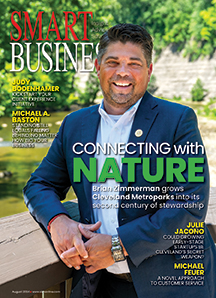
Jim Ousley looked at Savvis Inc. and saw a company that wasn’t growing as fast as he felt it should be.
“We came out of a recession like everybody did, and so, growth was stymied,” says Ousley, who has been chairman at the 2,600-employee company since May 2006. “But we knew we had issues at the top level, because the company was not growing as fast as our peers. You take that for a starter and you say, ‘Why not?’”
Ousley believed one of the problems was the acquisitions that Savvis made in recent years. While it grew the IT company from a physical standpoint, it also created a confusing culture that was focused more on operations and less on taking advantage of its new components to grow the business.
“It was more of an operational culture than a sales and support culture,” Ousley says. “We just started at the top and said, ‘We want to refocus this to where we’re making the age-old statement that the customer comes first instead of operational things coming first.’”
With that as his starting point, Ousley agreed that he was the best person to fix the problem and get Savvis back on a growth trajectory. So in March 2010, he added the role of CEO to his responsibilities.
Open the discussion
His first step was to comprehensively analyze the company’s sales and marketing leadership to determine what was or was not happening that was keeping the company down.
“Any time new management comes in, they have their own thoughts on what roles should be in the leadership of the company,” Ousley says. “I’m a great believer in going out and talking to the organization.”
Ousley had plenty of people around him who could provide a good report or summation of what they thought the problem was in the sales and marketing department at Savvis. But that wasn’t going to help him get to the root of the problem.
“I’m a great believer in touching the flesh and listening,” Ousley says. “One of the biggest challenges a new executive has is listening to the pulse of the company. You don’t do it by having it filtered through multiple layers of management. You have to go talk to everybody and you have to talk their talk. If you go down and listen to people and then you take some action, you really start to get people to enlist and get the organization to enlist.”
Ousley worked with his HR department to put together small group sessions with anywhere from four to 10 people from each group representing different areas of the company.
His focus was clearly on the sales and marketing department, but he wouldn’t do himself much good if the sales and marketing personnel were the only ones he spoke to.
“Let’s face it, sales management is biased,” Ousley says. “They have been living it at all levels. So I solicit from the sales organization but also the other support organizations and HR, finance and operations. I try to assimilate a lot of viewpoints, not just sales management’s viewpoints. Where do we have strong leadership in the sales organization? Where do we have strong talent? Where do we have weak talent?”
Break the ice in these sessions by opening up about yourself and encouraging others to do the same if they seem reluctant to speak up.
“You have a small group session of support engineers and you have 10 people who you have never met before,” Ousley says. “They are all nervous. So you just say, ‘OK, let’s go around the room. Introduce yourself. What do you like about Savvis? What don’t you like about Savvis?’ By the time you get around the table, everybody has gotten issues on the table.”
But it’s not enough to just hold meetings and expect that you’ll get all the answers to your problem. You have to work harder than that to see and hear what people are thinking.
Savvis put together an “Undercover Boss” day, a takeoff of the hit CBS television series in which CEOs get down in the trenches and experience what their employees do every day.
“My day was with the help desk,” Ousley says. “They get hundreds of calls every day. But I always knew that they put people in front of me who were the best people.”
Ousley wanted to hear from those people, but he made it a point to stray from the prearranged encounters and talk to other people, as well.
“So I’d sit in little cubicles with four or five people, and I’d be talking to one individual who would be showing me what they do, and then I’d lean over and talk to the other four that were close by and ask a question,” Ousley says. “Do you see the same problems? So there are ways to make sure you’re not just filtered to the most talented people and the noncomplainers.”

